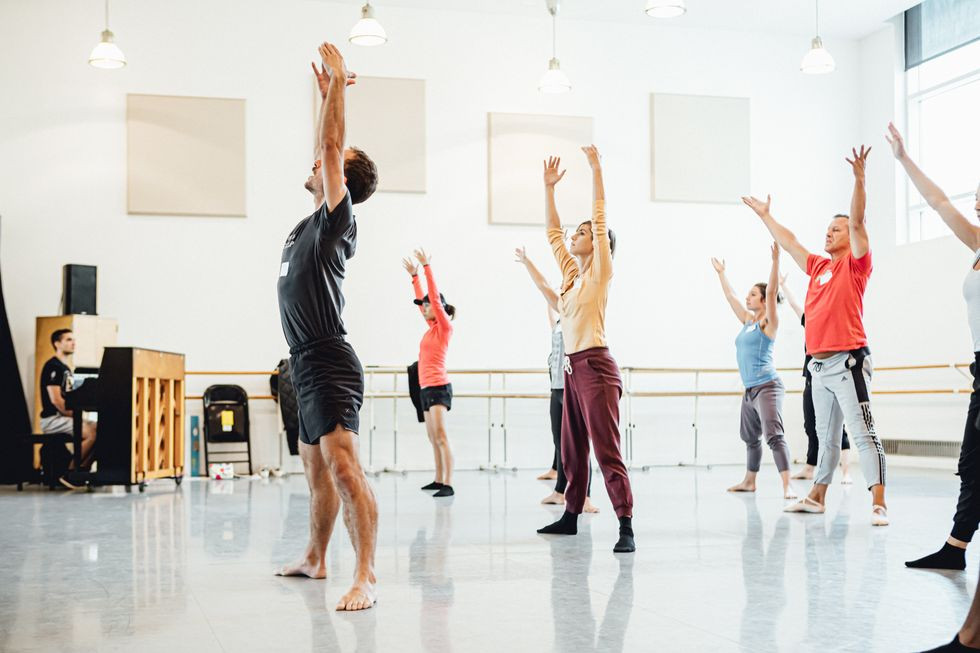Many seasoned dancers recall their first teaching experiences with a mix of humor and humility. Words like “chaotic,” “overwhelming,” and even “inadequate” often surface when reflecting on those initial forays into dance education. The common thread? Realizing that personal dance prowess doesn’t automatically translate to effective teaching, especially when it comes to guiding students in a Dance With Teacher.
My own first attempt at teaching, an intermediate ballet class for college peers back in 2011, was a stark lesson in this reality. Relying solely on my student experiences, I was woefully unprepared for the diverse needs and learning styles within the class. Developing individualized teaching approaches? That crucial aspect seemed to have been absent from my own technique classes.
This highlights a widespread misconception: that exceptional dance ability inherently qualifies someone to teach. This notion often disregards the specialized skills and training necessary for effective pedagogy, particularly when working with adult learners. It’s as if formal dance education training is perceived as solely beneficial for teaching children, a notion that undervalues the complexities of adult dance education and the nuances of the dance with teacher dynamic at all levels.
The truth is, teaching is a distinct art form, separate yet complementary to dancing. Just as dancers dedicate themselves to continuous training and physical conditioning, dance educators must commit to honing their pedagogical skills. My decade-long journey teaching diverse groups – across ages, socioeconomic backgrounds, skill levels, and abilities, both within and outside academic settings, and even internationally – has solidified this understanding.
Initially, my learning was reactive and experiential, gleaned from mistakes, mentors, and feedback from students and parents. Formal training began with a single, optional “directed study” in dance pedagogy during college. Later, while leading a dance program at an international school in South Korea, I gained certification in the International Baccalaureate curriculum, a globally recognized framework emphasizing conceptual and interdisciplinary learning. This period significantly shaped my approach to fostering a meaningful dance with teacher relationship in the classroom.
 A Black male dance teacher raises his right arm overhead, smiling, while adult students follow along.
A Black male dance teacher raises his right arm overhead, smiling, while adult students follow along.
Adult Dance Class with Instructor: Demonstrating Movement and Connection
Today, as the community programs director at Mark Morris Dance Group, overseeing faculty and curriculum across numerous partnerships in New York City, and still teaching modern dance at The School at the Mark Morris Dance Center, I can confidently affirm my proficiency as an educator. However, this journey underscores a critical question: Did the initial struggle have to be so arduous? Could a better understanding of dance education have eased that initial learning curve in establishing a strong dance with teacher connection?
Imagine if aspiring dancers were encouraged to view dance education not as a detour from their artistic aspirations, but as a pathway that enriches and sustains them. Fields like yoga, Pilates, and personal training readily embrace this concept. Dancers invest in certifications to enhance their financial stability and deepen their understanding of movement and body mechanics, making them more competitive in the performance world. Similar benefits would accrue from formal dance education training, yet this connection often remains underexplored in the context of a fulfilling dance with teacher interaction.
Admittedly, excellent degree programs in dance education exist. However, students pursuing these paths sometimes face a subtle devaluation, echoing the outdated adage, “Those who can’t do, teach.” This perception needs to shift to recognize the vital role of skilled educators in nurturing the next generation of dancers and fostering a positive dance with teacher environment.
Each year, Mark Morris Dance Center conducts teaching artist auditions, seeking experienced practitioners to join our team. Many recent graduates from top dance programs apply, brimming with enthusiasm to “inspire children.” While their passion is commendable, lead teaching positions require more than just enthusiasm. Many are surprised to learn that we require a minimum of one year, often several, as assistant teaching artists before they are deemed ready to lead their own classes and effectively manage the complexities of a dance with teacher relationship.
 A group of teaching artists stand in second position with arms raised in a V.
A group of teaching artists stand in second position with arms raised in a V.
Dance Teacher Training Workshop: Collaborative Learning and Skill Development
To bridge this gap, our 16-week teaching artist training program offers aspiring educators opportunities to assist classes, observe seasoned instructors, participate in workshops, and receive personalized mentorship. This immersive program embodies the kind of preparation I wish I had received before stepping into my first classroom and navigating the intricacies of a successful dance with teacher partnership.
As a dance community, we must acknowledge that the lack of preparation we may have experienced should not be perpetuated. We owe it to future generations to provide them with the necessary tools and training to excel as dance educators. This begins with recognizing teaching artists as indispensable members of our community and actively supporting those who choose to embark on this rewarding and vital career path, enhancing the quality of every dance with teacher interaction.

